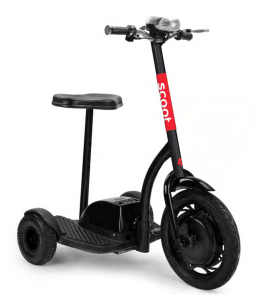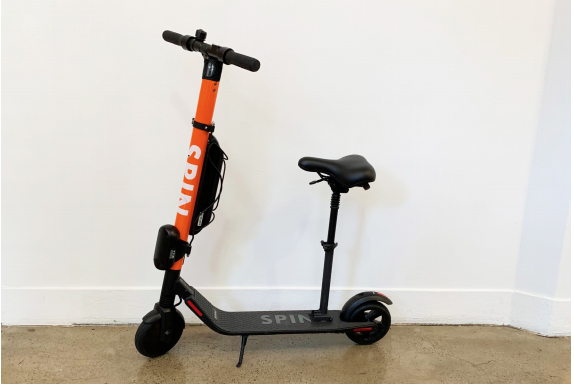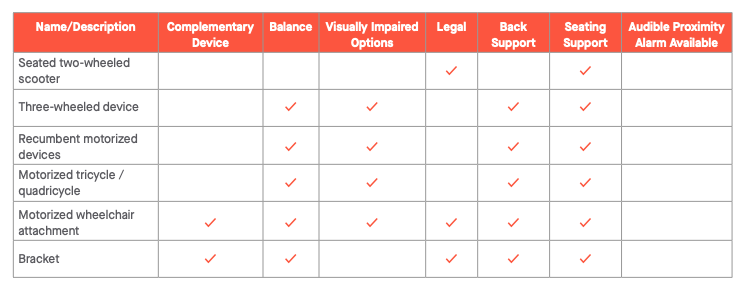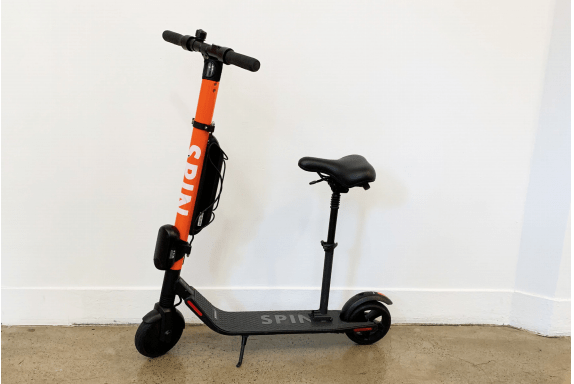As part of San Francisco’s program to operate shared electric scooters in the city, it’s requiring providers to pilot adaptive scooters to ensure people with disabilities are not left out from this new form of transportation. Companies are expected to deploy these adaptive scooters within the first three months of the permit, which begins this month.
Last week, the San Francisco Municipal Transportation Agency granted electric scooter permits to Uber-owned JUMP, Lime, Bird-owned Scoot and Ford-owned Spin. As part of their applications, each provider outlined its planned approach to developing adaptive scooters. We dig into the key details of their applications below.
It’s worth noting that tech companies have historically been slow to address the needs of people with disabilities. Uber and Lyft, for example, are the defendants in a number of lawsuits pertaining to a lack of accessible transportation offered on their respective platforms. But with cities now regulating transportation startups more than they have in the past, perhaps we’ll finally start to see vehicles that truly serve everyone and not just able-bodied people.
Scoot

Scoot’s initial concept. Image via Scoot San Francisco Municipal Transportation Agency Application
The plan is to create a vehicle that can convert manual wheelchairs into electric wheelchairs. Scoot envisions achieving this across five phases, where it collects input from experts and stakeholders in the disability community, designs a closed, off-street pilot with ten devices, launches a three-month, on-street pilot and ultimately launches that pilot citywide.
In its application, Scoot wrote, “Based on the advice, feedback and input from local and national disability advocates, experts and stakeholders, and in consultation with MTA, we are confident we will design an effective pilot program that exceeds the goals and meets the needs of the people with disabilities that seek to use powered scooters to assist their mobility.”
In addition to a vehicle that could connect a manual wheelchair to the electric scooter, Scoot says it’s exploring other vehicles and types of devices to serve people with other types of disabilities.
JUMP
While JUMP did not include images of an adaptive scooter in its application, JUMP envisions a library of sorts where people can access these adaptive scooters. Similar to Scoot, JUMP says it will work with disability advocates to better understand the needs of the community.
“We understand that no singular adaptive scooter product presently on the market will meet the diverse fitting requirements of San Francisco’s disability community,” JUMP wrote in its application. “In order to build a better understanding of potential user needs, JUMP intends to solicit direct feedback from the disability community by hosting a wide variety of events, one-on one engagements, and user testing to ensure our adaptive scooter pilot is shaped from the ground-up by the most diverse set of perspectives possible.”
Through meetings with key stakeholders, JUMP says it wants to better understand the preferred vehicle type, whether that means foot or e-powered tricycles, tandems, vehicles with trailers and so forth. Additionally, JUMP says it wants to better understand needs around making a reservation, bringing along service animals while riding and payment options.
Based on conversations with people in the city’s disability community, as well as in partnership with advocacy organizations, JUMP will select up to five different types of vehicles to test in San Francisco. From there, JUMP will determine how many and what kind of vehicles to pilot with the SFMTA.
Spin

Spin’s adaptive scooter prototype. Image via Spin San Francisco Municipal Transportation Agency Application
In partnership with LightHouse for the Blind, Visually Impaired and others, Spin is working to determine how to best deploy and operate adaptive scooters. So far, Spin has selected two potential vehicles to test in its first phase. Initially, these vehicles will have two wheels with seats. Other versions Spin is looking at include scooters with wider platforms and a seat, seated scooters with no platform and a pedal, recumbent motorized tricycles or three-wheeled electric scooters.
“Early feedback has indicated that many individuals with disabilities may not need an alternative device, but complementary equipment such as motorized attachments for manual scooters,” Spin wrote in its application. “Along this same vein, Spin has been researching methods to connect manual wheelchair users with its existing fleet by utilizing a bracket-like device. Spin has been collecting information from its community meetings to analyze intersections between CBOs* on common issues to help select its pilot devices.”
*Community-based organizations

Spin’s adaptive scooter options. Image via Scoot San Francisco Municipal Transportation Agency Application
Lime
Through its work with disability rights organizations, Lime is exploring braille customer service contact information on its scooters. as well as ways to help guide dogs identify scooters. Lime ultimately envisions a program where people with disabilities can reserve an adaptive vehicle and get it delivered to them. The program would enable people to reserve a vehicle up to seven days in advance.
Within the first three months, Lime plans to deploy ten vehicles and 75 in total within the first six months of the permit program.
“Our goal is to address the needs of more than one segment of the disability community,” Lime wrote in its application. “We are considering a vehicle to address balance and mobility issues that has a seat and another vehicle akin to the Firefly adaptive bikes, but in scooter form, that allows a wheelchair user to connect directly to vehicle without having to leave their wheelchair.”
As all of these companies work with their respective partners in the disability community, we’ll be keeping an eye around what seems to be working and resonating with folks. Either way, we’ll be starting to see these adaptive scooters on the streets of San Francisco by January, at the latest.
